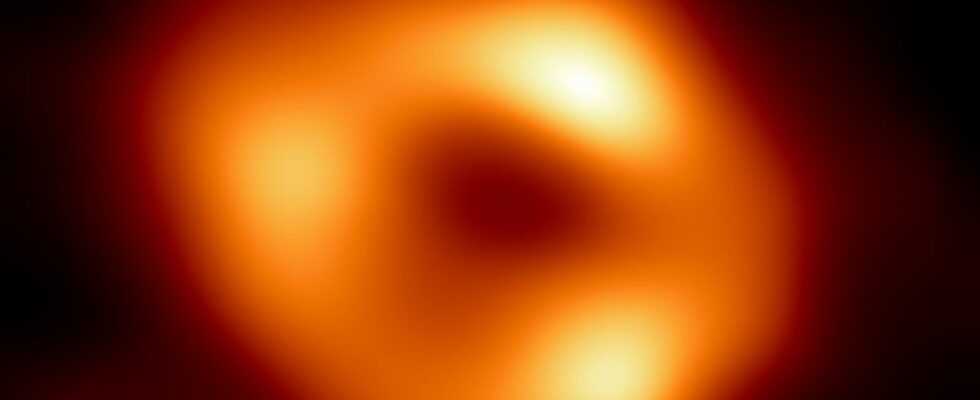Already at the origin of the legendary photograph of the black hole M87 * in 2019, the teams of the Event Horizon Telescope (EHT) have this time captured an image of the one that nests in the center of our Milky Way. This is Sagittarius A*.
There is a monster that sits at the center of our galaxy. The hypothesis of the existence of a supermassive black hole in the heart of the Milky Way had been confirmed years ago, there is now an official photograph. Or rather, an image of its accretion disk, namely a whirlwind of gas and dust around this gravitational well. The image was unveiled this Thursday, May 12, 2022 by the teams of the Event Horizon Telescope (EHT) and stands out as definitive proof that the object located in the center of our galaxy is indeed a black hole.
“We were amazed at how well the size of the ring matched the predictions of Einstein’s theory of general relativitysaid EHT project scientist Geoffrey Bower of the Taipei Institute of Astronomy and Astrophysics. These unprecedented observations have dramatically improved our understanding of what is happening at the very center of our galaxy and offer new insights into how these giant black holes interact with their surroundings.”
This image I made in Chile shows our home, the Milky Way. In its center, behind a “wall” of dust, hides a black hole of 4 million solar masses. We may be seeing it for the first time today. Here is the story of this star. Thread? pic.twitter.com/FRqY9XIJcg
— Eric Lagadec (@EricLagadec) May 12, 2022
This giant, baptized Sagittarius A*, about 4 million times more massive than the Sun, was however not easy to capture. The 300 astronomers from 80 institutes around the world, behind the project, relied on the observations of a network of eight radio telescopes, forming by interferometry a kind of giant telescope the size of the Earth. The small size (yes, you read that right) of Sagittarius A* also made the job more complex, with gases orbiting around it in just a few hours. “This means that the brightness and gas pattern around Sgr A was changing rapidly as the EHT collaboration observed it — much like trying to take a clear picture of a puppy chasing its tail.”detailed a scientist of the project.
Two years earlier, in April 2019, the EHT teams had indeed photographed another black hole, this one at the heart of the M87 galaxy. The maneuver had been simplified by the fact that the gases orbit around in several weeks. It must be said that the giant is of a different size: this time we are talking about a mass equivalent to several billion times that of the Sun. The black hole in our galaxy is therefore more than a thousand times smaller and less massive than M87*.
